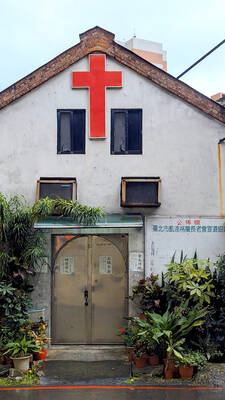Google made a wise decision when it decided to release an open source mobile operating system — it has allowed it to quickly infiltrate the smartphone market because of the business model: it’s free and open source like Linux.
Despite this, most of the Android devices on the market today are not really true competitors to the iPhone, due to the immaturity, sluggishness and the availability of apps. But with the release of the latest device, the HTC Nexus One running Android v2.1, Android is finally becoming a threat to the iPhone, which has held its own for almost two years as the most desirable mobile device.
The Nexus One is an extremely slim and sleek touchscreen device that sports a trackball and the obligatory Android keys (back, menu, home, search). It uses a virtual keyboard so it’s much smaller than previous Android phones we have reviewed, such as the flagship G1. In fact, it makes the iPhone look quite bulky by comparison.
Under the hood lies some serious computing power, the likes of which powered our desktop computers less than 10 years ago. The Nexus One is actually more powerful than some of the older computers we are still using today. It packs an astonishingly high 512MB of ram, 1GHz Snapdragon ARM CPU (central processing unit), 4GB of internal storage and a huge screen resolution of 800 x 480. Finally, true multi-touch ability has hit Android devices and the Nexus One can do most of what the iPhone can do in terms of touchscreen gestures: you can pinch to zoom in on a map for instance, or slide a menu up with a simple flick of your finger. It still can’t, however, perform the most advanced iPhone multi-touch functions, such as touching and rotating your hand around to also rotate
the map.
Apple claims half of the great features the Nexus One sports — or 20 of its patents — have been infringed upon, and not just the touchscreen. The list of alleged infringements contains things like “Object-Oriented Graphic System,” “Unlocking a Device by Performing Gestures on an Unlock Image,” “List Scrolling and Document Translation, Scaling, and Rotation on a Touch-Screen Display” as well as power-saving patents like “Conserving Power by Reducing Voltage Supplied to an Instruction-Processing Portion of a Processor.” Either way, once the Nexus One is in your hands it’s extremely unlikely Google would issue an update to remove features based on the current legal situation, but it does raise concerns that Apple holds such broad patents that could effectively give it a competitive advantage for years to come.
One of the beautiful things about the Nexus One is its vibrant high-resolution 3.7-inch screen with an extremely bright backlight. The camera is decent, too. It’s a 5.0 mega-pixel camera with autofocus, capable of taking near-perfect shots during the day and not so bad shots at night using a better-than-average LED flash. Video can be recorded at 720 x 480 resolution, the same resolution as that of an ordinary TV and a very rare feature for mobile phone cameras right now. The usual array of features are all included: Bluetooth, WiFi, microSD slot, GPS, mini USB, accelerometer, compass, proximity sensors, and — a real deal-breaker for some — an ordinary-sized headphone socket that can link the Nexus One directly to your sound system or headphones like people have been doing with iPods for years.
Operating the phone feels snappy. The Android operating system doesn’t drag at all like it used to and the 1GHz CPU is really quite powerful. You won’t feel much slow down unless the phone is still booting or performing some synchronization in the background. The Android 2.1 operating system also ships with some new features such as live wallpapers, which are animated backdrops that can react to user input, such as touching the screen or rotating the phone. Google has also incorporated five different “home screens,” a bit like the desktop we have become accustomed to on our PC. This means users can customize multiple screens on their phone. For example, users might choose to place all of their favorite games on the left home screen, which they can access with a flick of their finger. Similarly, they might want to keep live news and weather widgets on the far right screen. The middle screen comes as default with a Google search bar widget and four of the main apps you will use most often: “Phone,” “Contacts,” “Browser,” “Maps.” The search bar widget can be tapped to enter text, or users can click a small microphone image and tell the phone what they want to search for on Google.com — and guess what, it works!
The Android market is booming and the number of applications available for the phones running the operating system grows daily. Android now offers some really awesome apps and games that can be downloaded onto the device by using the “Market” application. The capabilities of the Nexus One are apparent when you see a racing game such as Raging Thunder running beautifully with no dropped frames — the Nexus One is as capable or more than the iPhone as a gaming device. Of course, there aren’t that many top games out on Android yet, but within the next 12 months the market will likely be flooded with them as developers begin to take Android as seriously as the iPhone.
Gareth Murfin is a freelance mobile developer www.garethmurfin.co.uk

Following the rollercoaster ride of 2025, next year is already shaping up to be dramatic. The ongoing constitutional crises and the nine-in-one local elections are already dominating the landscape. The constitutional crises are the ones to lose sleep over. Though much business is still being conducted, crucial items such as next year’s budget, civil servant pensions and the proposed eight-year NT$1.25 trillion (approx US$40 billion) special defense budget are still being contested. There are, however, two glimmers of hope. One is that the legally contested move by five of the eight grand justices on the Constitutional Court’s ad hoc move

Stepping off the busy through-road at Yongan Market Station, lights flashing, horns honking, I turn down a small side street and into the warm embrace of my favorite hole-in-the-wall gem, the Hoi An Banh Mi shop (越南會安麵包), red flags and yellow lanterns waving outside. “Little sister, we were wondering where you’ve been, we haven’t seen you in ages!” the owners call out with a smile. It’s been seven days. The restaurant is run by Huang Jin-chuan (黃錦泉), who is married to a local, and her little sister Eva, who helps out on weekends, having also moved to New Taipei

The Directorate-General of Budget, Accounting and Statistics (DGBAS) told legislators last week that because the Chinese Nationalist Party (KMT) and Taiwan People’s Party (TPP) are continuing to block next year’s budget from passing, the nation could lose 1.5 percent of its GDP growth next year. According to the DGBAS report, officials presented to the legislature, the 2026 budget proposal includes NT$299.2 billion in funding for new projects and funding increases for various government functions. This funding only becomes available when the legislature approves it. The DGBAS estimates that every NT$10 billion in government money not spent shaves 0.05 percent off

Dec. 29 to Jan. 4 Like the Taoist Baode Temple (保德宮) featured in last week’s column, there’s little at first glance to suggest that Taipei’s Independence Presbyterian Church in Xinbeitou (自立長老會新北投教會) has Indigenous roots. One hint is a small sign on the facade reading “Ketagalan Presbyterian Mission Association” — Ketagalan being an collective term for the Pingpu (plains Indigenous) groups who once inhabited much of northern Taiwan. Inside, a display on the back wall introduces the congregation’s founder Pan Shui-tu (潘水土), a member of the Pingpu settlement of Kipatauw, and provides information about the Ketagalan and their early involvement with Christianity. Most